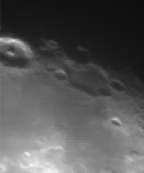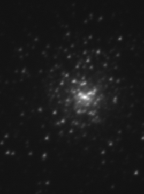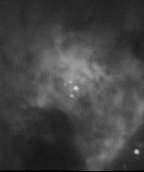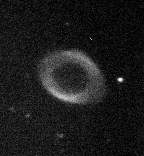Sky
The UMD Astronomy Observatory Remains Closed
Fall 2024 Update: The UMD Astronomy Observatory remains closed to all public outreach activities.
Two of the telescopes at the UMD Observatory are fitted with CCDs, digital imaging devices used by astronomers to record the amount of incoming light from an object. Everything that we know about objects outside our solar system (and most of what we know even about objects inside our solar system!) we know by examining the light from the object that reaches Earth. CCDs allow astronomer to digital record the light received from a planet or a nebula and then take that information back into the lab for further analysis.
CCD images often capture far more detail than we can see with just our eyes looking through the telescope. Your eye works on a constant download to your brain. Light goes in, signal goes directly to brain. CCDs, however, can record light for longer exposures before downloading the information into an image file. This means you can collect 1, 5, 10 minutes of light from an object all together into one image, revealing fainter detail than if you just looked at a few seconds worth of light.
Celestial Events
- NEO 2007 TU24 flyby
- Planetary Images: Mercury Transit 2006-Nov-08
- Planetary Images: Lunar Occultation of Jupiter
- Venus Transit: 8 June 2004
- Aurora over College Park
Aurora over College Park
Digital Pics
Most of these were taken at the UMD Observatory by staff. But there are also some images that were shared with us. We've tried to make sure that appropriate credit labels are included.
- Satellite Images
- Solar/Lunar Images
- Planetary Images
Planetary Images: Venus
Planetary Images: Mars
Planetary Images: Pluto - Comet and Asteroid Images
- Deep Sky Images
Really Old CCD pics!
These images were taken with our 20" telescope and a Photometrics CCD system before the renovation in 2000.
 Jupiter |
 Saturn |
 Petav Crater on the Moon |
 M 15 - A Globular Cluster in the Constellation of Pegasus |
 M 42 - The Orion Nebula A star forming region in Orion |
 M 57 - The Ring Nebula Planetary Nebula in the Constellation of Lyra |